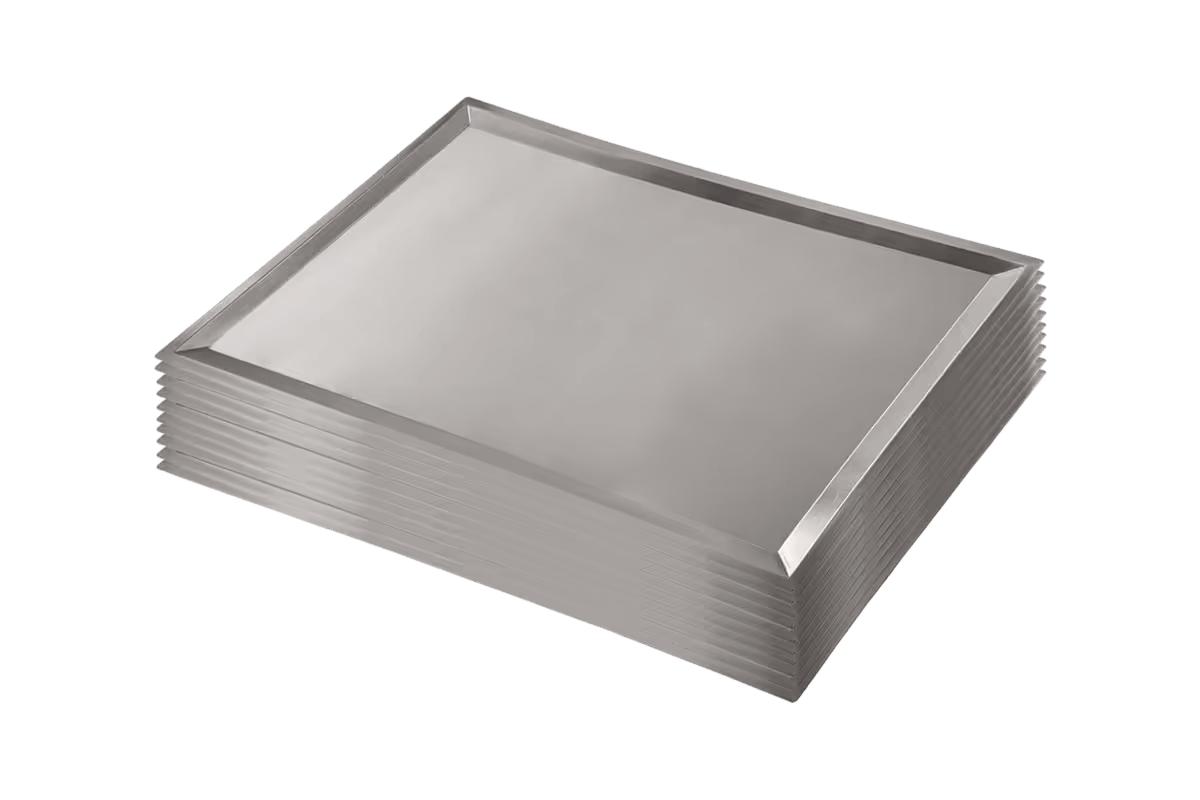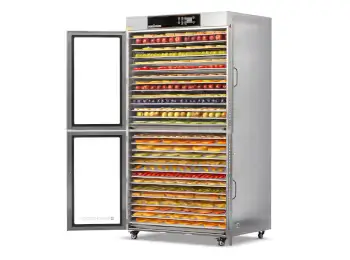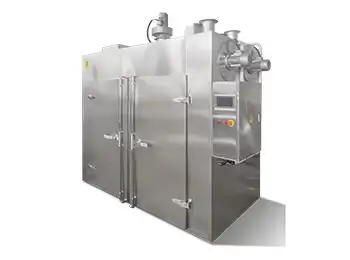Don’t be a jerk when it comes to food safety
Jerky, a nutrient dense, high protein, low carb dried meat, is any type of meat that’s been cured in a salt solution, reducing its moisture content to less than 50%. With archaeological evidence showing its been around since the time of the Egyptians, the word jerky is derived from the term ch’arki (or charqui) meaning ‘to burn meat’. An indigenous South American tribe, the Quechua, first began using the sun, wind and smoke from fires to preserve the meat of alpaca and llama sometime around 1550.
Jerky has long been a favorite snack in Canada but with public scrutiny into food safety at an all-time high, we’ve seen an increase in demand for not only our high quality commercial dehydrators but the relevant food safety information as well. People are concerned with food safety surrounding the sourcing, production and storage of jerky.
With this in mind, the first thing a potential commercial producer should do is become familiar with the Canadian Food Inspection Agency's1 guidelines. Although healthy and delicious to eat, jerky production is overseen by some pretty strict laws. And rightly so. Turning fresh meat into a preserved meat product is serious business right from the start.
Sourcing meat
Traditionally, jerky is made from lean strips of meat, such as pork, beef, lamb and poultry (although some feel raw poultry isn’t the best option due to the texture and flavor of the final product). Lean cuts of meat are best as fat can become rancid during production or storage resulting in unpleasant flavors, or even a ruined product.
You can use ground meat to make jerky, but disease-causing microorganisms are harder to eliminate in ground meat than in whole meat strips. When using ground meat, choose meat with less than 10% fat content.
It goes without saying, when using quality, grass fed, Canadian beef, you’ll benefit from enhanced flavors.
Storing meat safely takes a bit of preparation
You’re responsible for ensuring raw meat has been stored correctly, even before it lands on your loading dock. When the meat is received, it should be checked for temperature and should be no more than 4°C (40°F) or below.
The Canadian Food Inspection Agency outlines a number of preventative controls for meat products,2 including manufacturing fermented and dried meat products3 (like jerky).
Food safety is highly regulated to prevent as many as 25,000 foodborne illnesses annually thanks to tougher standards.
The two most common bacteria growths in incorrectly processed jerky, Salmonella and E. Coli, can prove deadly, making food safety vital.
As a general rule of thumb, when receiving raw meat:
- Move it as quickly as possible to a storage space that’s clean, dry and pest free
- stored at 4°C (40°F) or colder – check it with a thermometer
- stored separately from or below ready-to-eat foods to avoid contamination
- not stored in warm or humid areas, or in direct sunlight - this could spoil the food or make it unsafe
- stored in containers and packaging, off the ground and away from chemicals like cleaners and insect sprays.
What the HACCP
Originally developed by NASA and a group of food safety specialists in the ‘60s, Hazard Analysis Critical Control Point (HACCP) is an internationally recognised food safety and risk assessment plan. The plan outlines seven key principles in food safety:
- Hazard Analysis
- Critical Control Points
- Critical Limits
- Critical Control Monitoring
- Corrective Action
- Procedures
- Record Keeping.
Providers to the food industry can have their products endorsed as food safe under HACCP4 guidelines.
Marinades and spices
The thickness of the meat strips, and the desired end result, will determine the choice of marinades and spices used to flavor the meat. Will your jerky be soft and moist or hard and dry?
Wet marinades have different consistencies and help foster a consistent flavor and distribution of salt and spices. The recipes may include oil, salt and spices, with acidic ingredients such as vinegar, lemon juice, teriyaki, soy sauce or wine. The use of vinegar (brown, white or apple cider) increases acidity, helping to hinder bacterial growth.
Traditionally, salt and smoke was used to preserve and flavor meat. While there wasn’t much variety, it did the job of preserving meat when it was plentiful for times when meat was scarce. Over the years, many cultures have added spices to improve the taste.
Today, the sky’s the limit when it comes to the sheer variety of jerky marinades, spices and flavors but good ole salt endures as the most common type of jerky seasoning. Salt is also key to lowering the water activity level, inhibiting the growth of some pathogens and spoilage bacteria.
With marinating times of anywhere between 6 and 24 hours, this should be done in refrigeration set at between 0 to 4°C (32°F to 40°F). To ensure continued food safety, commercial refrigeration units should be stabilized prior to the start of any marinating period.
Nitrate
Some commercial producers may use a ‘cure’ consisting of sodium nitrite to extend the life of their jerky. Some benefits of using nitrite as part of the curing process are:
- prevents spores of C. botulinum from germinating
- fixes the colour
- enhances flavor, and;
- it’s an antioxidant, which prevents spoilage during storage.
Lethality reduction and humidity
It’s essential to remove any pathogens, like salmonella and E.coli, from the product. As well as monitoring the products internal temperature and water activity level, the relative humidity in the dehydrator oven is also critical. The Canadian Food Inspection Agency recommends cooking the product to an internal temperature of 71°C3 (160°F) for 15 seconds before starting the drying process. It’s a good idea to maintain 90% humidity until this internal temperature is reached.
Without humidity, the product surface can dry too quickly, and bacteria may become heat resistant. Some bacteria can become more heat resistant as their moisture level decreases, so maintaining humidity allows the product to reach a higher surface temperature and a greater reduction in microorganisms.
Humidity can be increased by sealing the dehydrator to create a closed system and placing shallow trays of water in the oven to increase moisture, or injecting steam or a fine mist into the dehydrator. Using a humidity sensor to check levels throughout the lethality treatment is strongly advised.
Drying the meat
Once all steps have been taken to minimise pathogens, the drying stage can begin. Drying the meat is the final stage in the process from raw meat to jerky. The FSIS5 recommends that, as the meat for jerky is salted under refrigeration, it can be dried at a temperature of between 55 to 60°C (130 to 140 °F).
The key is to achieve drying wherever there are bacteria which could spoil or make the product unsafe. For jerky, these bacteria may be on the surface or internally.
Under Canadian guidelines, dried meat products like jerky are considered “shelf stable”3 and do not require refrigeration if the pH is 4.6 or less, regardless of final water activity, or the water activity is 0.85 or less, regardless of the final pH. Note, it you are planning on selling into the US, the FSIS Compliance Guideline for Meat and Poultry Jerky Produced by Small and Very Small Establishments5 recommend that dried meats such as jerky, must be dried to a water activity level of less than 0.75 aw to prevent microbial growth. Weight loss of the meat is a good indicator of water activity.
The rate and amount of drying depends on factors such as:
- the rate of air flow over the marinated meat
- the difference between the relative humidity of the air humidity of the food. The relative humidity of the food is usually described as water activity
- moisture diffusion within the product - be aware of drying too quickly causing the surface to dry before the centre and case hardening (dry edge) can occur
- thickness and diameter
- time
- temperature.
The best way to guarantee a stable temperature and a safe final product is with a dehydrator. This way, temperature and humidity can be controlled.
Jerky strips should be laid out carefully on a tray in a single layer. Strips should not be overlapping or touching allowing plenty of air to circulate over and around each strip.
Some jerky is softer and easy to chew. This style of jerky has a higher water content and can be eaten much faster.
Hard jerky is more the traditional food and chews longer. This jerky stays on the drying racks longer, therefore losing more water content. There’s often less preservatives used in hard jerky as the extra drying time, resulting in more water removal, stops bacteria from growing.






































.svg)



